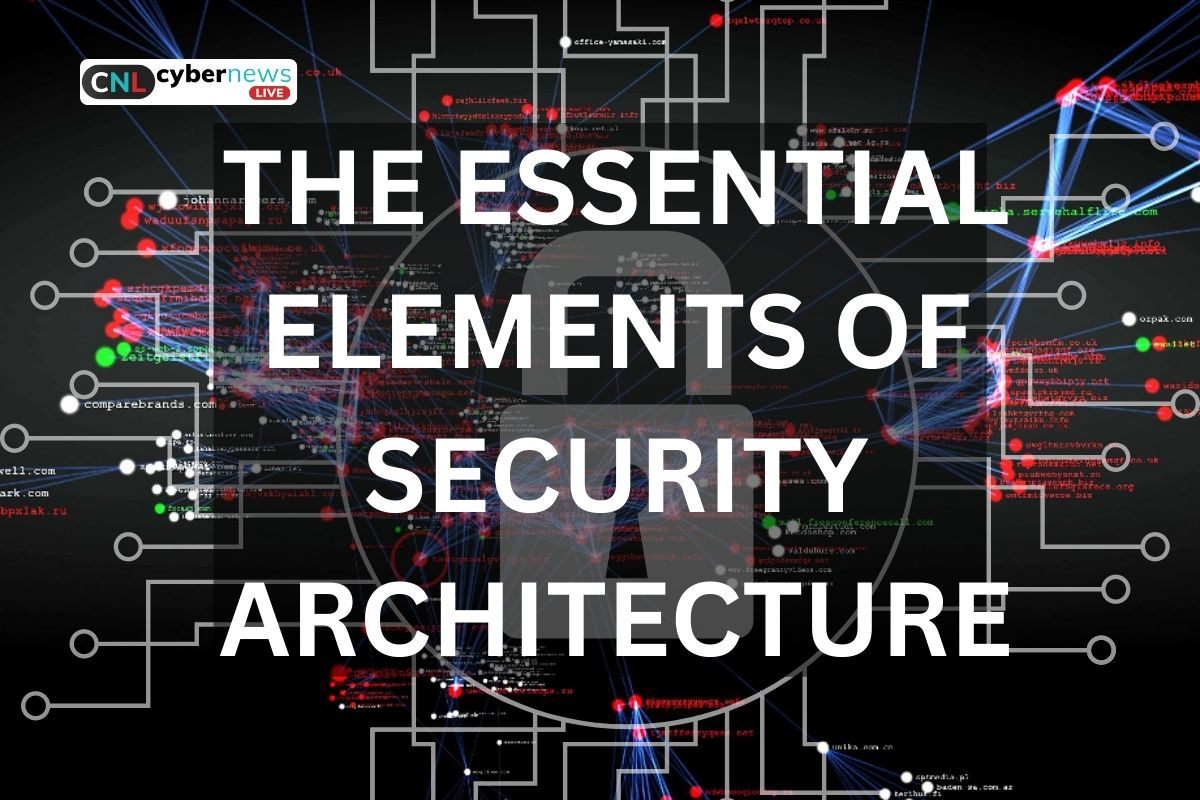
The Essential Elements of Security Architecture
Securing information and preserving sensitive data is of the utmost significance in today’s interconnected digital environment. A complete and reliable security framework for organisations is designed and implemented in large part thanks to security architecture. The goal of this article is to give readers a thorough grasp of security architecture, as well as its importance and important factors.
Defining Security Architecture
The design and structure of an organization’s security systems and controls are referred to as security architecture. It includes the policies, practises, technology, and standards used to safeguard information assets and reduce security threats. It lays out a plan for creating a safe and resilient environment that is in line with an organization’s goals and objectives.
Objectives of Security Architecture
The primary objectives of security architecture are to:
- Ensure the security, integrity, and accessibility of information assets.
- Determine and evaluate potential security threats and vulnerabilities.
- Create and put in place adequate security controls and countermeasures.
- Create a defence-in-depth plan to protect against a variety of threats.
- Enable efficient incident response and recovery in case of security incidents.
- Ensure compliance with applicable laws, regulations, and industry standards.
Key Components of Security Architecture
1. Security Policies and Standards:
The foundation of security architecture is the development of comprehensive security rules and standards. These documents contain rules and principles for security implementation and enforcement, as well as define the organization’s security goals.
2. Risk Assessment and Management:
Risk assessment approaches are used in effective security architecture to identify and analyse potential threats and vulnerabilities. Risk management processes aid in risk prioritisation and mitigation by implementing suitable controls and solutions.
3. Security Controls and Technologies:
It comprises the selection, deployment, and management of various security policies and technologies. These may include firewalls, intrusion detection/prevention systems, encryption techniques, access control systems, and security information and event management (SIEM) solutions.
4.Network Segmentation:
Network segmentation is an important part of it. It entails dividing a network into distinct zones in order to minimise the lateral movement of attackers and mitigate the consequences of a security breach. Segmentation aids in the separation of key systems and sensitive data from less secure areas.
5. Identity and Access Management (IAM):
IAM is critical in security architecture because it ensures proper user access rights and privileges. To prevent unauthorised access to systems and data, it includes processes for user authentication, authorization, and identity lifecycle management.
6. Incident Response and Recovery:
Incident response and recovery processes are included in a well-designed security architecture. This includes developing incident response strategies, defining roles and duties, and putting in place methods to identify, respond to, and recover from security incidents.
Benefits of Security Architecture
The benefits of security architecture are numerous and essential for organizations in today’s digital landscape. Here are some key benefits:
1. Comprehensive Protection:
It provides a holistic approach to protecting an organization’s information assets. By considering all aspects of security, including policies, processes, technologies, and standards, it ensures that security measures are implemented at multiple layers, addressing potential vulnerabilities and threats comprehensively.
2. Risk Mitigation:
It aids in the successful identification, assessment, and mitigation of threats. Organisations can address vulnerabilities and limit the frequency and effect of security incidents by conducting risk assessments and adopting suitable security controls and remedies. This reduces financial losses, reputational harm, and legal liabilities connected with violations.
3. Regulatory Compliance:
Compliance with laws, rules, and industry standards is critical for organisations to preserve sensitive data while maintaining customer and stakeholder trust. It ensures that security measures are in accordance with regulatory requirements and industry best practices, allowing organisations to demonstrate compliance during audits and avoid penalties or legal ramifications.
4. Increased Resilience:
A well-designed security architecture improves an organization’s resistance to security incidents. Organisations can efficiently detect, respond to, and recover from security breaches by adopting incident response and recovery procedures. This eliminates business disruptions, shortens recovery times, and aids in maintaining continuous operations.
5. Business Continuity and Productivity:
Security events can cause business activities to be disrupted, resulting in financial losses and reputational harm. Through adequate network segmentation, disaster recovery planning, and business continuity measures, security architecture assists organisations in maintaining uninterrupted operations, assuring productivity, and minimising financial and operational disruptions.
6. Improved Stakeholder Confidence:
Implementing a strong security architecture aids in the development of trust and confidence among customers, partners, and stakeholders. Demonstrating a commitment to security and privacy instils trust that sensitive information is effectively safeguarded, strengthening the organization’s reputation and creating good connections with stakeholders.
7. Cost Savings:
While it costs investment, it can result in significant long-term cost benefits. Organisations avoid financial losses connected with data breaches, regulatory fines, legal fights, and brand harm by averting security events. A well-planned architecture also aids in the optimisation of security investments by guaranteeing the optimum allocation of resources.
8. Scalability and Adaptability:
To meet growing threats, technological improvements, and organisational growth, it should be scalable and adaptive. Organisations may successfully integrate new systems, incorporate emerging technologies, and respond to changing security requirements by developing a flexible architecture.
Considerations in Security Architecture
Business Requirements: It should be aligned with an organisation’s business objectives, industry standards, and compliance requirements. It should take into account the organisation’s unique risks and problems to ensure that security measures are proportionate and allow for commercial operations.
Scalability and Flexibility: To handle the evolving threat landscape, corporate expansion, and technology improvements, it should be scalable and adaptable. It should be able to expand in the future, integrate with new systems, and embrace developing security technology.
Collaboration and Communication: Collaboration among many stakeholders, including IT teams, business units, top management, and external partners, is essential for successful security architecture. Effective communication and cooperation are required to guarantee that security goals are aligned and security measures are implemented throughout the organisation.
Continuous Monitoring and Improvement: It should contain methods for continuous monitoring, threat intelligence analysis, and frequent security evaluations. This enables organisations to discover emerging threats, vulnerabilities, and developing hazards, allowing for proactive security enhancements and continuous enhancement.
Conclusion:
An important component of every organization’s overall security strategy is security architecture. Organisations may develop a strong and resilient security framework by knowing the principles of security architecture and its main considerations. In today’s continuously changing environment, a well-designed security architecture helps to protect sensitive information, manage security risks, comply with regulations, and enable secure business operations.




